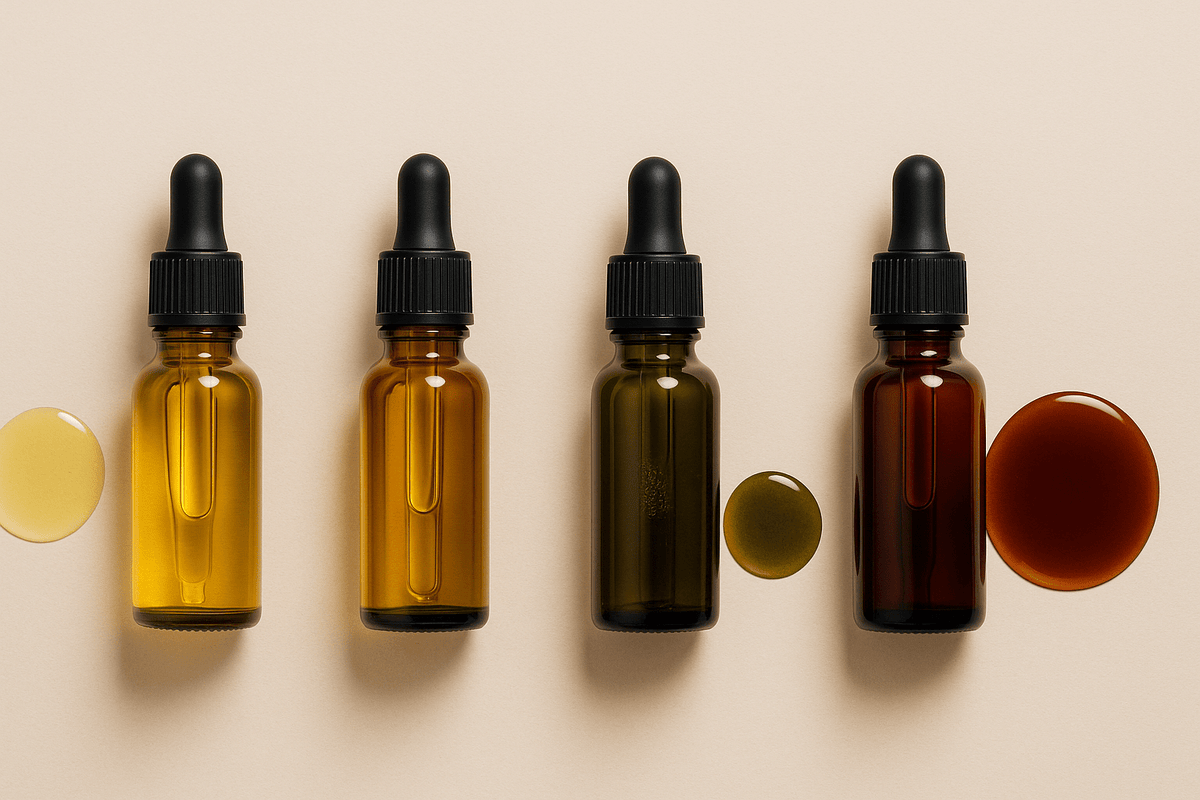
Why do some CBD oils have different textures?
|
|
Reading time 4 min
|
|
Reading time 4 min
CONTENTS
Not all hemp CBD oils are alike, and that's hardly a problem. Color, texture, concentration, every detail is important. Mama helps you decipher.
If your oil is dark or thick, it's rarely by chance. Several factors come into play, and we'll take a look at them together.
This is where it all begins.Extraction with supercritical CO2 yields a purer, often clearer oil, with little plant residue. It is filtered, refined and soft on the palate.
On the other hand, if CBD is extracted with natural solvents such as ethanol, one can obtain one of the following CBD oils oil, which is darker and thicker. Why is this? Because it retains more of the plant's compounds, such as chlorophyll, waxes and lipids. Nothing toxic, on the contrary, but it does affect texture and color.
Here, we're talking about the composition of CBD. This is where it really comes into play. Depending on the spectrum of your oil, the color and texture will change.
The full spectrum is the total package. All the cannabinoids are there, even a slight trace of THC (still less than 0.3%), plus terpenes and flavonoids. In short, everything the plant has to offer!
Like full spectrum CBD oil is less filtered, the oil is often darker, denser and cruder, especially when blended with cold-pressed cold-pressed CBD oil . The latter retains all the nutrients of the seed, but is naturally denser and greener.
Broad spectrum is almost the same, except that the THC has been removed. You keep the other compounds, you lose nothing in quality, but the color is often a little lighter, softer to the eye and sometimes to the palate.
CBD isolate is pure, isolated CBD with nothing else added. It's mixed with a carrier oil, and the result is a super-clear, very fluid oil, with no vegetal taste. It's clean, precise, but without the surrounding effect of full spectra.
So if you see a very dark oil, there's a good chance it's unrefined full spectrum . And that's not a defect, quite the contrary: some people prefer this rougher look.
You can't take pure CBD as it is! It has to be diluted in a vegetable oil, known as a carrier oil. And here again, depending on the oil chosen, the texture changes.
So depending on whether the brand has chosen coconut or hemp, the final texture will be very different. And that's normal.
You may have heard that a dark or thick oil is of inferior quality. Not true! It's not a question of quality, but of manufacturing choices.
Often, yes. The more CBD an oil contains, the more viscous it will be. A 30% oil is logically denser than a 5% oil.
Viscosity can also be due to the type of carrier oil, or to a lack of refining. That's why you should always check the label for the exact dosage, even for cheap cheap CBD oil .
Often, but not always. An amber or greenish color may indicate a less filtered oil, with more terpenes, flavonoids and secondary cannabinoids. This sometimes gives a fuller entourage effect. It may also simply depend on the carrier oil. Hemp oil, for example, is naturally dark.
The cruder the oil, the more pronounced the vegetable taste. Isolates have a neutral, almost invisible taste. Full spectrums can have an earthy, herbaceous, sometimes bitter aftertaste.
It's neither good nor bad, it's a matter of personal taste. If you don't like hemp in your mouth, try MCT + isolate or broad spectrum oils.
So, what to do with all this information? You can use it to choose an oil that's right for you. Here are a few simple tips to help you make the right choice:
In the end, it's not the color or viscosity that matters most, but how you feel about it. A good CBD oil is one that's good for you, one that suits your use, your taste and your pace.
